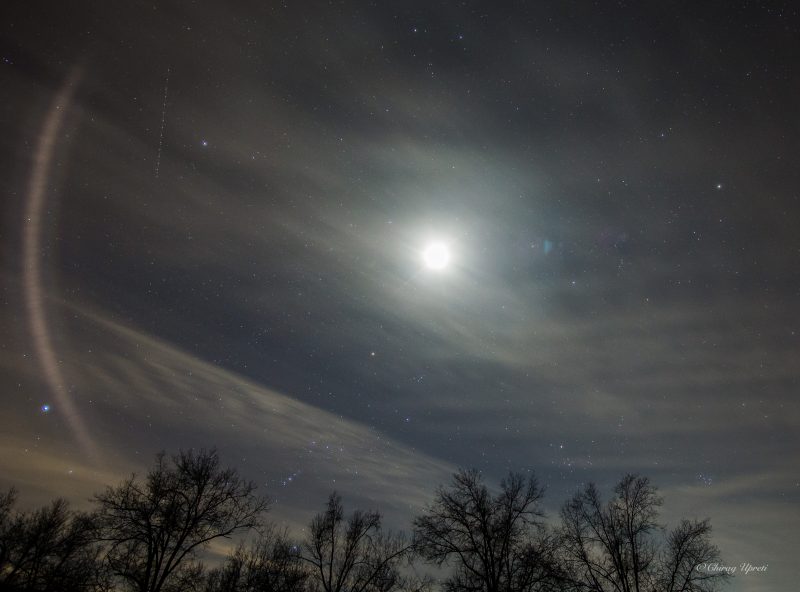On March 30 and 31, 2020, look for the waxing moon and Winter Circle (or Winter Hexagon) stars. It’s difficult to convey the humongous size of the Winter Circle that fills our western sky at dusk and nightfall now. This great star pattern even dwarfs the mighty constellation Orion the Hunter. In fact – as shown on the chart at the top of this post – Orion makes up the southwest portion of the Winter Circle, which is composed of 1st-magnitude stars (some of the brightest stars in our sky).
Look for a circular (or hexagonal) pattern of bright stars around the moon these next few nights. Just be sure to look at dusk and nightfall, because – on these late March evenings – the Winter Circle stars start to sink below the horizon by early evening.
And if you’re out there looking soon after sunset, you might also catch the sky’s brightest “star,” which is actually the dazzling planet Venus, near the red star Aldebaran. Venus outshines Sirius, the Winter Circle’s most brilliant star, by 15 times!
Read more: EarthSky’s guide to the bright planets

The Winter Circle can be seen from around the world, although its orientation with respect to the horizon will be different, depending on where you are. If you’re in the Southern Hemisphere, notice that the sky’s brightest star – Sirius – will appear at the top of the Circle and the star Capella at the bottom (if you can see Capella at all; it’s far to the north on the sky’s dome). No matter what part of Earth you’re standing on, though, this same pattern of bright stars will surround the moon on March 30 and 31.
Also note that the Winter Circle stars are bright. They’ll withstand a fair amount of moonlight. You might even see them in a sky beset by light pollution.

Bottom line: Use the moon on March 30 and 31, 2020, to find the bright stars of the Winter Circle!
Enjoying EarthSky so far? Sign up for our free daily newsletter today!











